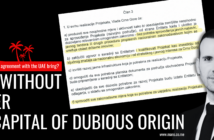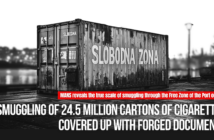 (Podgorica, 30 July 2012) – The Supreme State Prosecutor holds in its archives – among the documents that MANS once again submitted this Thursday to support the criminal charges leveled for abuses of bankruptcy proceedings in relation to 29 enterprises – sufficient evidence to launch an investigation into the existence of a so-called bankruptcy mafia in Montenegro.
(Podgorica, 30 July 2012) – The Supreme State Prosecutor holds in its archives – among the documents that MANS once again submitted this Thursday to support the criminal charges leveled for abuses of bankruptcy proceedings in relation to 29 enterprises – sufficient evidence to launch an investigation into the existence of a so-called bankruptcy mafia in Montenegro.
The procedure used to introduce bankruptcy into the majority of the firms considered, and that were mostly located in northern Montenegro, was usually similar and was often presided over by the same people, including the bankruptcy judges: Zoran Asanin, Muzafer Hadzajlic, Veselin Perunicic, Milovan Nisavic and bankruptcy trustees like Cedo Gospic, Rajko Dragas, and Milovan Culafic.
Among the most brutal and most suspicions methods of initiating bankruptcy proceedings are definitely two closely located enterprises – Termovent from Andrijevica and the Rudes Brickworks from Berane.
We expect the prosecutor to assign someone new to these cases, someone that will do their job properly and that will examine all the documentation and testimonies that MANS has submitted.
The bankruptcy procedure in Termovent was initiated by telephone as a result of a €10,000 electricity debt to the Electric Power Company of Montenegro (EPCG).
Shortly thereafter, all the property of this firm – whose HQ is in Belgrade – disappeared from the records while key persons were barred from entering the enterprise’s premises.
The Berane Brickworks also disappeared because the owner of Podgorica’s Katel construction enterprise, Petar Djurisic, after purchasing the firm for a pittance, quickly introduced bankruptcy into Rudes on the basis of his own €9,000 debt to workers for their “hot meal” allowances.
After this, due to the inaction of the bankruptcy judge and trustee, he transported the construction equipment of this firm to Podgorica in order to use it for his own firm, while only leaving behind ruins in Berane.
In this way, businessmen managed to multiply themselves in Montenegro and turn themselves into newly minted wealthy people, while many enterprises were converted into ruins and their employees transformed into social service recipients.



